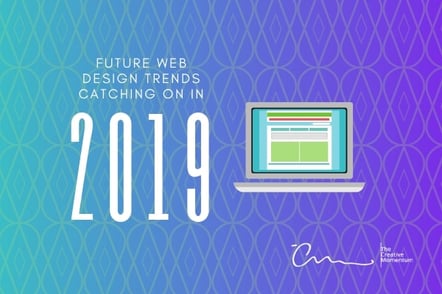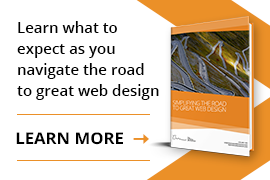
You don’t need a magic eight-ball to predict the future of web design. Disruptive technologies are already here. With continued advances in the tech that’ already on the market, we can expect major changes in web development. AI-generated websites, conversations with your homepage, and light speed data are on the horizon.
Artificial intelligence has been the center spotlight in conversations about disruptions in web development, and for good reason. Substantial capital has been put on the line to develop technologies that could completely change the face of UX and web design, but AI isn’t the only variable that’s going to shake up the equation for web developers. Emerging infrastructure like 5G, political developments like GDPR and the continued priority of mobile responsive design all bear major implications for the future of web design.
Hello Dave
Nearly 20 million smart home assistants were sold in Q3 of 2018. Whereas the proliferation of mobile voice interfaces is still a subject of debate in the tech industry, the verdict for home voice assistants is in: they’re here to stay.
The biggest shakeup that voice assistants have brought to date has been in search and SEO. Google algorithms have gotten increasingly better at full phrase queries, which are in turn effective for voice search with Alexa and Google Assistant, in turn affecting SEO.
The next big disruption will be in web design and UX, which is currently lagging in accommodating voice. There isn’t yet an industry standard approach to on-site voice navigation, but as AI assistants continue to proliferate the market, this niche presents itself as an untapped gold mine, which will eventually be prospected.
Artificial Intelligence
The topic of voice assistants can’t be broached without mentioning AI, which continues to make wonderful and terrifying advances in every industry under the sun. The most widespread use of AI in web design currently is with chatbots interacting with visitors. The sophistication of these bots has come a long way since the days of tripping up an AIM bot.
This year, OpenAI, a joint project between Sam Altman and Elon Musk, pulled back the release of their latest AI text generator because it was too good at what it was designed for. The text generator could take a few paragraphs of text to generate completely novel sentences and statements that mimic the source. Multiple sources have confirmed the ability of the text generator, which has been hated for fear of its application in misinformation, trolling, and fake news.
All of this is to say that AI will continue to make its way into new practices beyond what we currently know it to be capable of. Machine learning algorithms coupled with UX studies are one potential avenue that could revolutionize the way we approach design.
The concept of using AI in web design is already coined as Artificial Design Intelligence (ADI), referring to machine learning algorithms that can build websites on their own. The Grid is a design platform that received $4M in funding back in 2014 with the express purpose of developing design assistants, and Wix has been refining an ADI interface since 2016.
Mobile Convergence
Mobile-first is already a commonplace dogma in web design. Since Google started lower ranking for websites that weren’t mobile responsive, it’s no longer optional to accommodate mobile users. It’s a hard requirement. When asked about the future of web design, industry leader Anton Zykin predicts a further convergence between design elements and interfaces from mobile into desktop browsing:
“The next step for the web, in general, will be adopting the interaction and UX patterns from apps. The transitions and animations when navigating between the pages will resemble the ones found in apps mostly. Aesthetically, there will be a lot of convergence too, where decorative elements will be replaced by functional UI controls. It is already happening now.”
Privacy By Design
It turns out that you can’t have your cookies and eat them too. One of the biggest shakeups in the world of web design came with the passing of GDPR in Europe, which affects everything from international copyright law to – you guessed it – privacy. At risk of fines, designers and developers are now obligated to consider GDPR privacy laws regarding transparency and data collection at the forefront of their workflow.
With increased attention and public outcry surrounding Facebook with its continued user data scandals in the U.S., it’s inevitable that reforms on our side of the pond will also hit eventually. From the perspective of a designer, privacy will continue to be a priority from the onset of your workflow.
Harder, Better, Faster
5G has already seen its launch in Chicago and Minneapolis with ISPs hyping up the advent of faster internet and projections for nationwide coverage by the end of 2020. It’s only a matter of time before speed and bandwidth considerations are overhauled entirely. The advent of 5G presents an entirely new set of creative possibilities in design. Existing tech like WebGL, AR/VR, and HD video and images will go from restrictive to commonplace once 5G is the norm.
From high-speed internet to ADI and privacy by design, change is here with more to come. Working in tech has always been a state that demands continued adaptability and designers aren't spared from that prerequisite.
While some of these developments feel like new hurdles to overcome or threats to job security, such is the natural state of technology. Once those fears are overcome and the inevitable comes upon us, we'll be looking at a new web, but even more exciting with ever-increasing possibilities.


